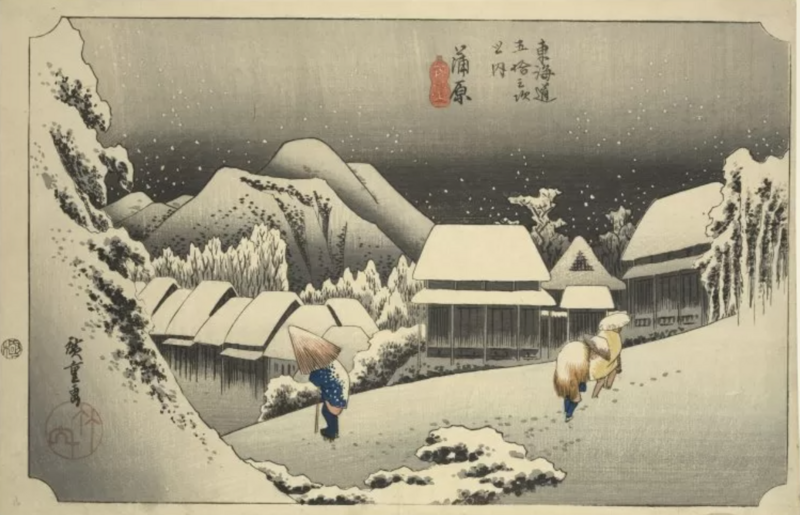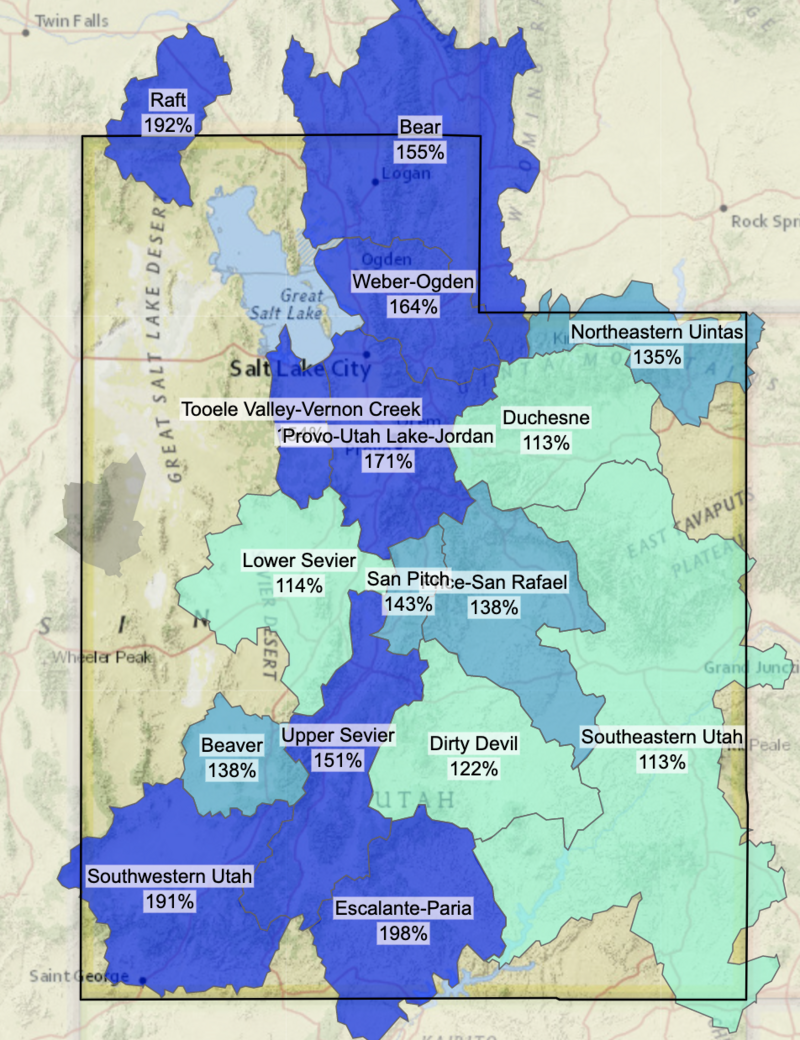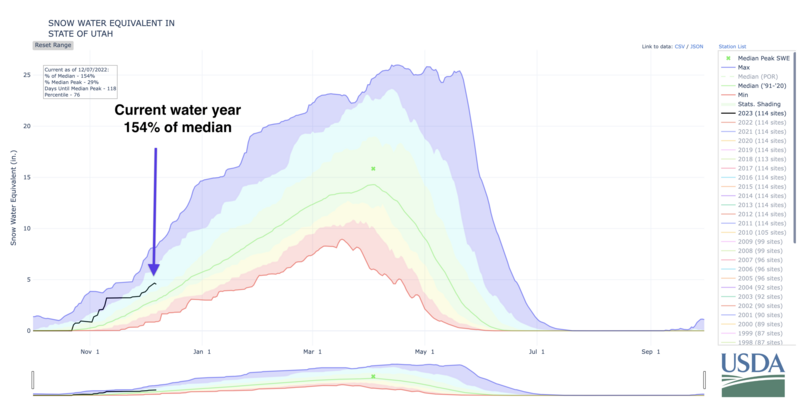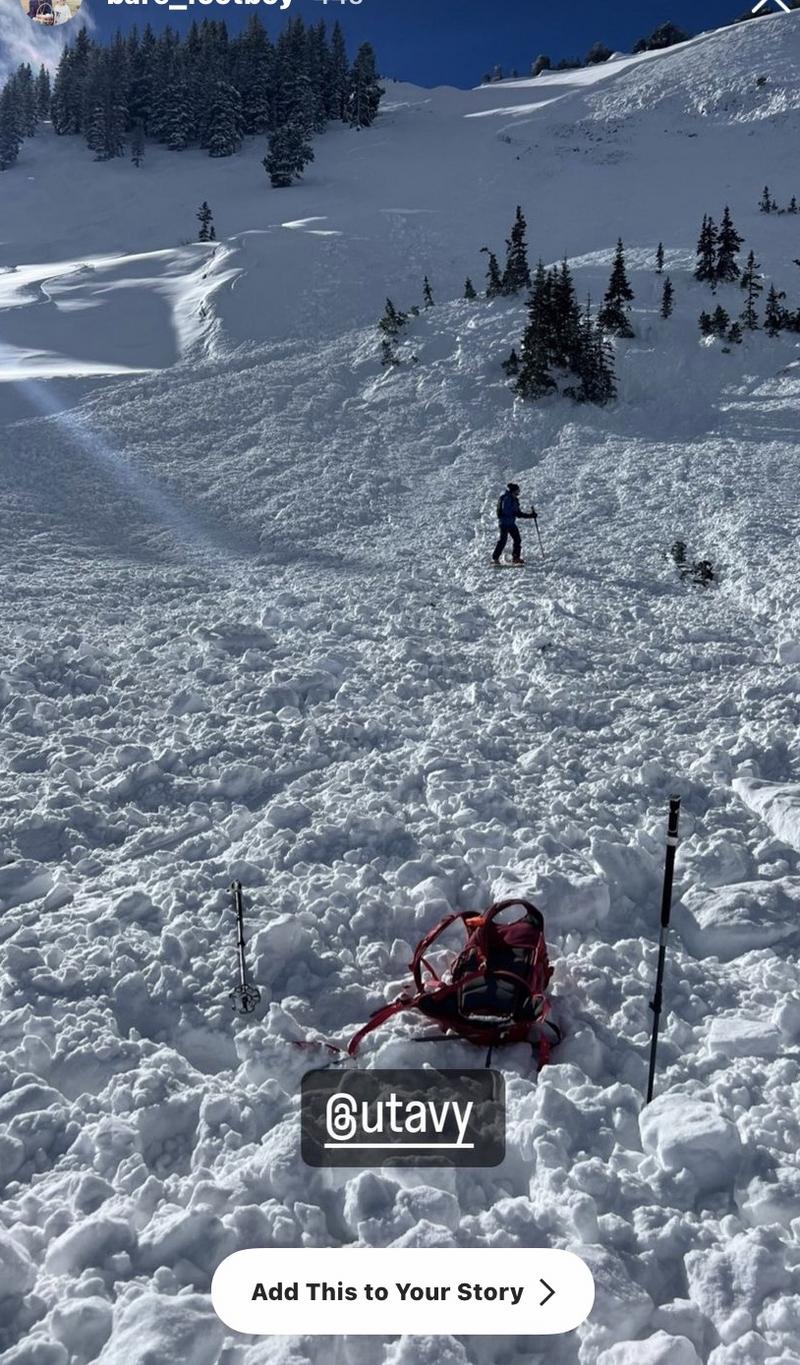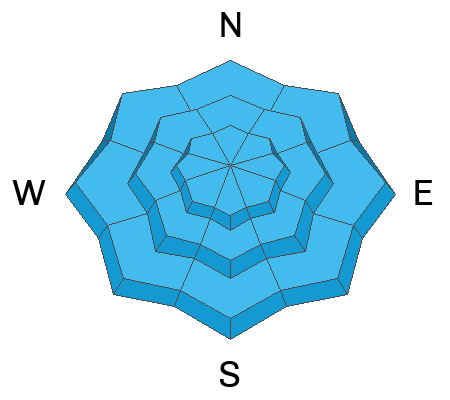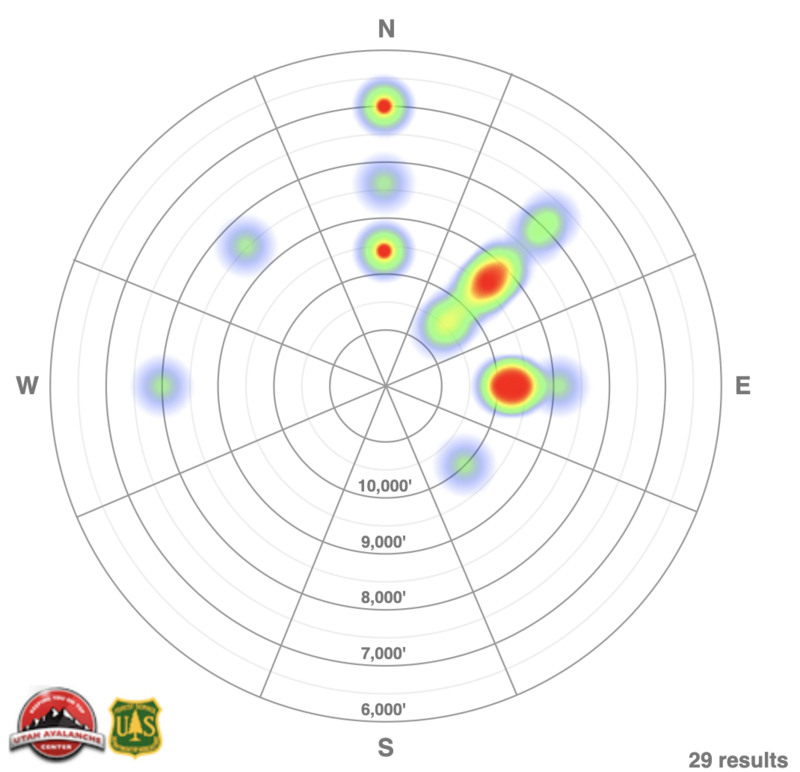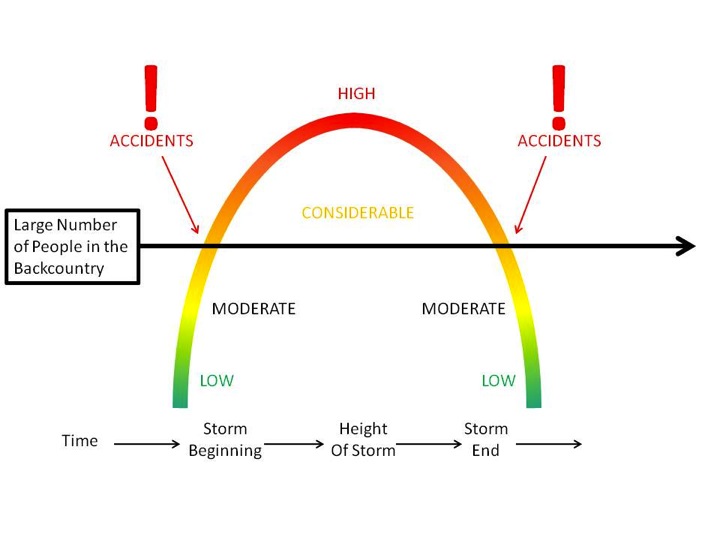Join the Utah Avalanche Center and the Division of Outdoor Recreation to celebrate the Fourth Annual Avalanche Awareness week, from December 4 - December 11. Click
here to view the full list of events for the week. A few of note below:
Cold, full winter moon.
Split flow. Clouds, light snow streaming
from the south. Evening.
Skies are clear. Winds are hardly a whisper. Mountain temperatures are in the single digits up high and in the basins and at the trailheads. The mid-elevation thermal belt temperatures are in the mid-teens.
Riding conditions remain 5 star although solar aspects will host a breakable sun crust this morning.
Snow depths are 5-6' in the upper reaches of the Cottonwoods and 3-4' along the Park City ridgeline. It's been a banner early winter thus far and we sit at 154% of normal for the state. (More
INFO)
(USDA NRCS)
For today, we'll see increasing clouds and light snowfall this evening streaming in from the south. 1-3" possible by tomorrow early. Winds will be light from the southeast. Temps will remain cool - in the teens and low 20s.
OUTLOOK: An active weather pattern continues. We'll see a break Thursday with a quick hitting storm for Friday that may produce another 3-6" of snow. Winds will increase from the south ahead of another set of storm for late weekend into early next week. Whatever snow dance or jig you guys are doing out there...keep going.
Mark Staples put together a comprehensive Weather and Snow Summary HERE>
Four more (likely) human triggered avalanches failing on our November PWL of weak sugary facets 1-2' deep yesterday. The first two occurred along the Park City ridgeline on either side of 9990', the second in the upper reaches of Big Cottonwood.
Dutch Draw 9800' East facing 1-2' deep and 200' wide. THIS required Canyons ski patrol, Utah DPS helicopter and nearby skiers to check the large debris pile for any burials. A very close call.
Red Rock Chutes 9600' NE facing 2' deep 40' wide. Possibly an intentional cornice drop prodded out this hard slab pocket.
Lackawaxen 10,600' NE facing 1-2' deep 75' wide. Details unknown at this time.
Rocky Point 10,400' NE facing 2' deep 50' wide. Looked to be a skier remotely triggered slide from adjacent terrain or the ridgeline.
Our running list of Avalanches can be found
HERE> Dutch Draw avalanche, pc: D Martin
Some natural and human triggered loose snow sluffing also noted in the new snow.




